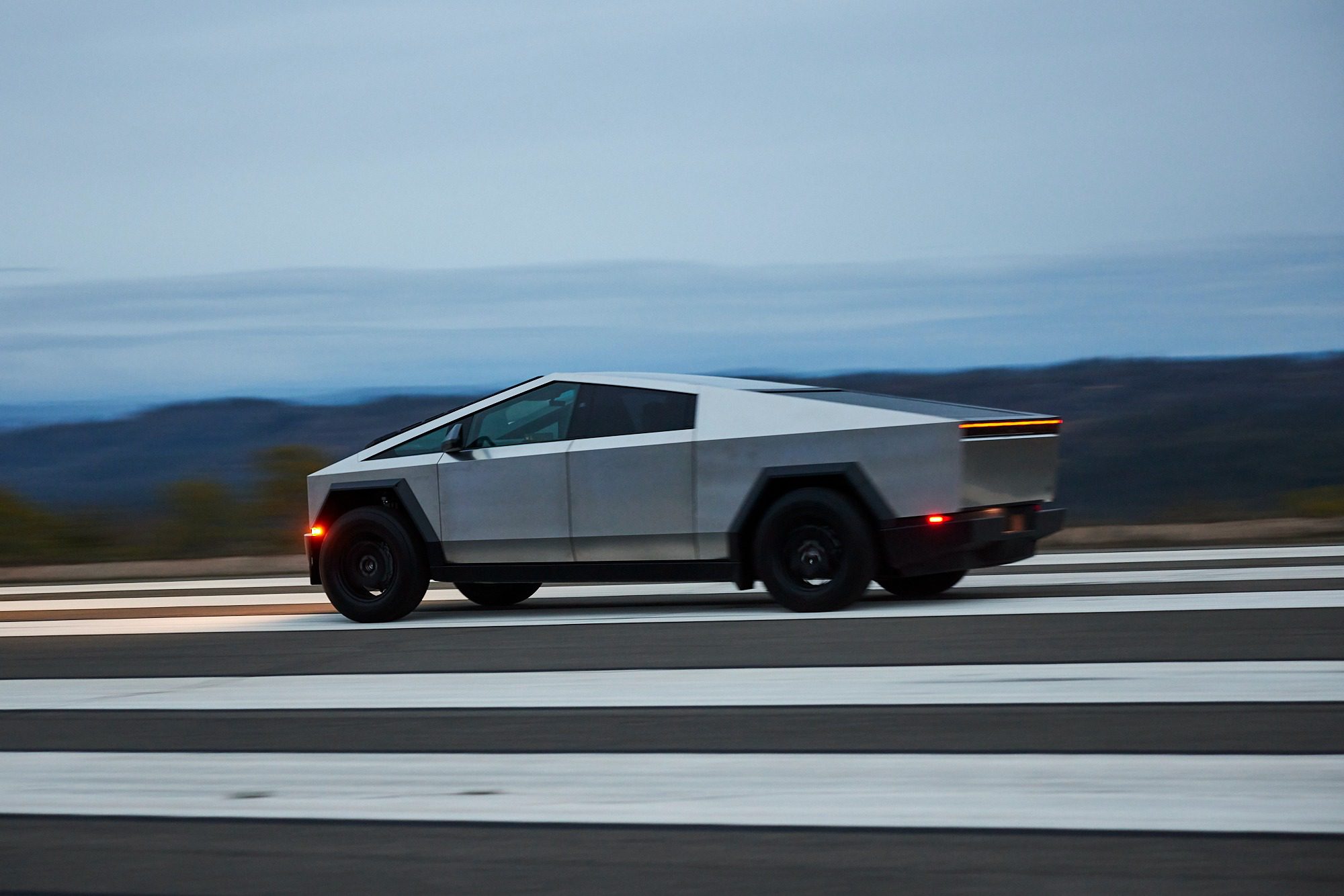Now that Tesla’s Cybertruck rolls among us mortal Earthlings, and the amped-up variant, the Cyberbeast, is available at auction, it’s time to take a step back and refresh the question: Why did Elon Musk build the Cybertruck?
There is the obvious first answer: Musk loves to make a splash, which can mean antagonizing, trolling, and annoying. But more frequently, Musk making a splash means succeeding at what might seem like an impossible task—and doing it with the flair of a matador.
The Cyberbeast is the height of flair. And it entered the marketplace almost exactly as we first saw it in 2019: Which is to say, so utterly off-the-charts wild that I thought to myself, “This thing is actually pretty punk rock.” By bringing it to the market, Musk gets to push his narrative, which is a bit like an executive version of the middle finger: Doubt me at your own risk!
And he also gets closer to his true goals. The real reason he built this truck, according to sources who know, is two-fold: First, Musk wants to kneecap the F-150, America’s top-selling vehicle for 41 consecutive years, and steal Ford’s $40 billion revenue bonanza. He moved Tesla to Texas, the global epicenter of the pickup truck, and will spend his life trying to steal Ford’s bread-and-butter, as well as their main course, dessert, and digestif.
Second—and this is no joke—Musk fully intends to drive the Cybertruck on Mars. That’s his stated intention, and into focus pretty clearly when you dive into Cybertruck’s details. This is the car that Musk is going to take to Mars. Looked at from that perspective, the insanity of the design, the peculiarities, the choices he made, appear almost rational.
What would a Mars car require? Mars has a challenging environment, to say the least: It is damn cold, has hurricane-force dust storms, and impossibly rough terrain. A vehicle designed for Mars—one just like the Cyberbeast, would need to be robust enough to handle these conditions. Check. Features might include enhanced battery life for long-distance travel, solar power integration for energy independence, and a pressurized cabin to protect occupants from the thin Martian atmosphere.
Advanced life support systems and autonomous navigation—the list of Martian needs goes on, and each line up nicely with the Cyberbeast’s specs. It also has all-wheel steering, making it maneuverable for that rugged Martian surface.
Why is the Cybertruck built around a stainless steel exoskeleton? The steel, which has been the object of some ridicule on social media for susceptibility to corrosion, is the same HFS (SpaceX-speak for “Hard F***ing Steel”) used in the construction of SpaceX’s rockets.
So if a Cyberbeast flies to Mars, its structural material is interchangeable with the vessel in which it arrived. Need repairs? No problem. All that an operator needs to do is swap out the seals, et voila: a Mars-ready cockpit.
I remember way back to 2019, when Tesla’s lead designer, Franz von Holzhausen, tossed a ball-bearing and notoriously smashed the Cybertruck’s window in a “botched” demonstration of the truck’s armor-plated glass. What might have looked like a mistake at the time, may very well have been intentional. Musk understands guerilla marketing as well as anyone in the world.
Since that moment, the Cybertruck and armor plating has been seared in our enthusiast brains; after a couple years pass, the details of the armor plating become vague. The Cyberbeast at auction now can take a 9-mm round.
Musk alludes to the von Holzhausen incident in one of the Cyberbeast’s many easter eggs: tap the window of the Cyberbeast profile on main display screen five times, it shatters, then you hear Elon’s voice: “Awww, man! It didn’t go through.”
As always in the world of Elon Musk (so far), the joke is on the doubters.
